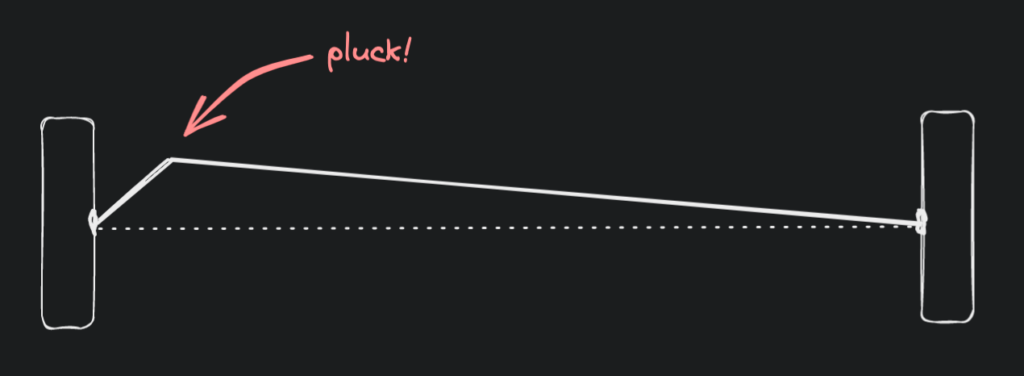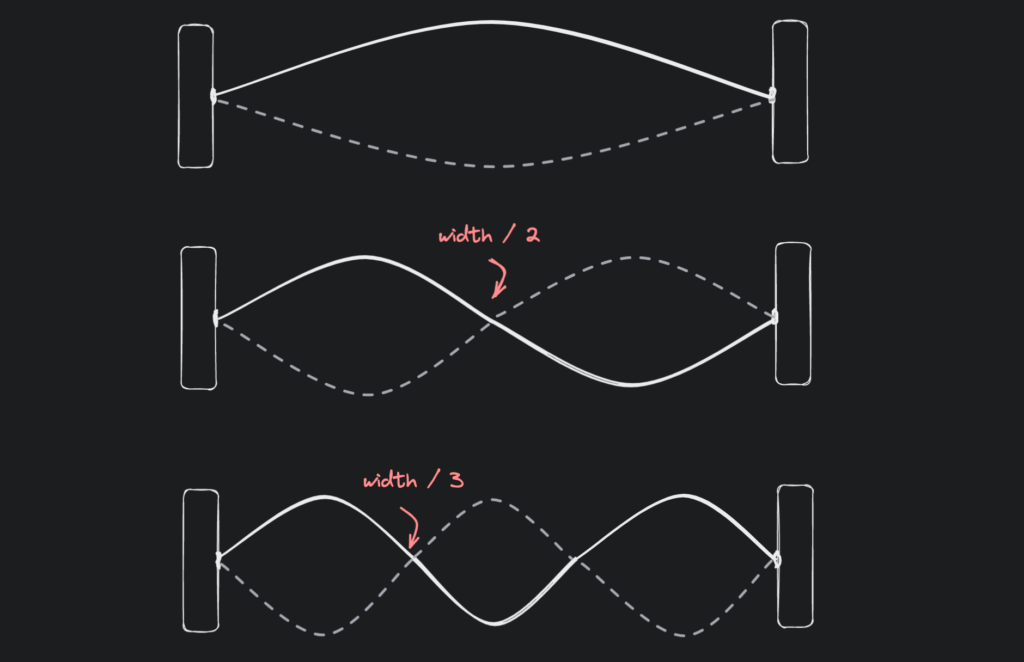This is a straightforward question. But there are so technical fields with so many different pieces of jargon, that sometimes it just feels complicated. Or it just gets muddled up.
Physical objects that make tonal sounds
Many types of physical objects (strings, organ pipes, drum heads) make tonal sounds when they are plucked or struck.
Let’s take a string. When you pluck a guitar string, you are pulling it to the side, displacing it from its resting state.

When you let go, the string string vibrates at a frequency according to its thickness and tension. So for example low A guitar string would vibrate at 110Hz, or 110 times a second.

Complex Tones
When we pluck our A string, we don’t just hear a single pure 110Hz sine tone.
That’s because our string vibrates in more patterns than one simple back and forth. It actually vibrates at equal subdivisions of its lengths.

These are called “modes.” The sound they produce are what we call harmonics.
So our A string on the guitar produces a fundamental frequency of 110Hz but also harmonics at every integer multiple of this frequency — at 220Hz, 330Hz, 440Hz.